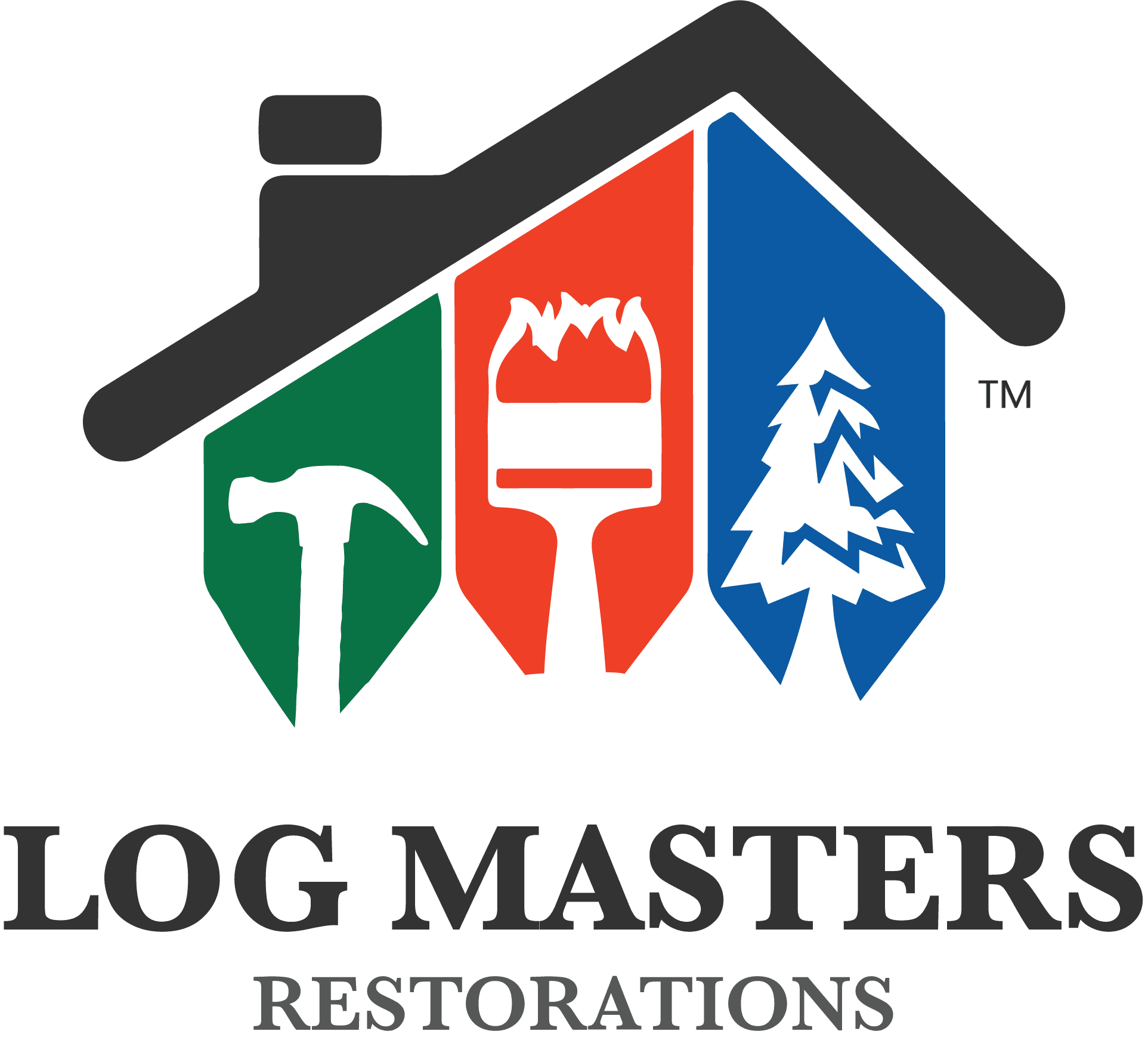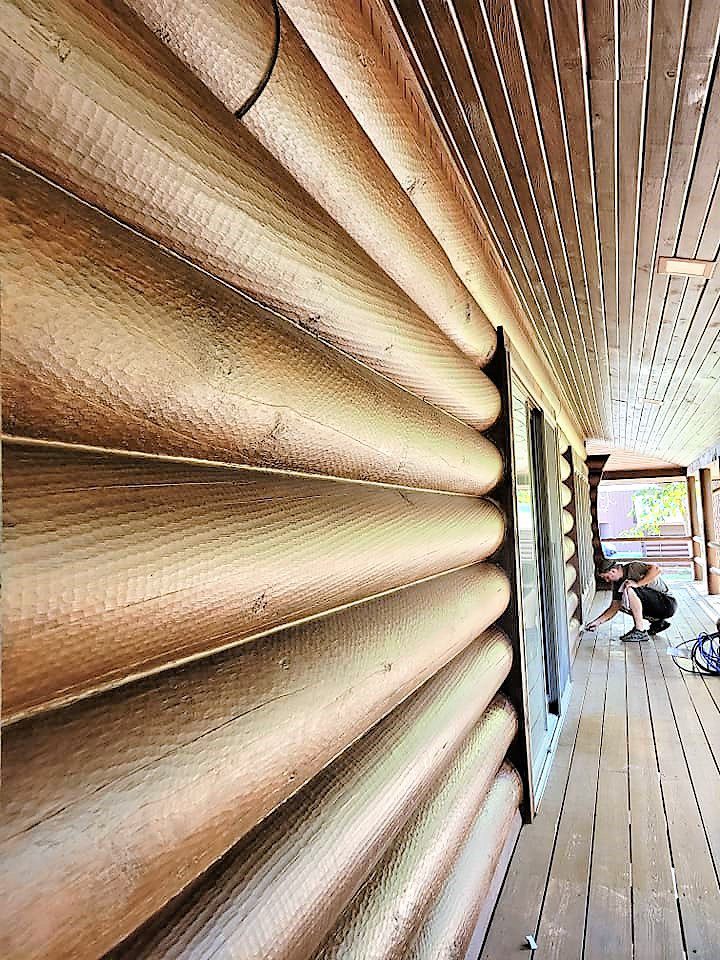Depending on your preference, and location, they can be both. Interior walls are often smooth for easy cleaning. Ask any log home owner. Dusting cobwebs are no easy task with textured or hand hewn logs. However, textured logs will often absorb stain better than a smooth glass like finish. As a result, this is why the exterior of a log cabin wall has a semi-smooth surface.
In this article, we will look at:
- Video Q & A: Can you sand our log surface smooth like glass?
- Smooth Glass Finish Issues
- Penetrate the Wood Surface
- Understanding What You Don’t Understand
- Online Resources
- Log Rot and Stain Removal Hardest Job
Video Q&A: Can You Sand Our Log Surface Smooth Like Glass?
Sanding interior walls with a smooth texture can make dusting easier, but it’s important to avoid achieving a “glass” smoothness before staining. Water-based stains and clear finishes often fill in the pores, leaving a rather smooth surface.
If you sand wood past 240 grit sandpaper, the wood dust becomes so fine that it starts clogging the pores of the wood. This prevents stain and finish from soaking into the wood properly, risking a poor finish job.
From “What Happens When You Over-Sand Wood (And How to Fix It!)” by MissLindsayFay on A Butterfly House website at https://abutterflyhouse.com/fixing-over-sanded-wood/ on 06-28-2023
Smooth Glass Finish Issues
When sanding wood with a glass-like smoothness, the surface wood fiber heat up and condenses. Condensed wood fibers repel liquid, and that’s the opposite of what you want when staining your log home. This is often seen on tables after a hot plate causes a blemish. A good read is How to Sand Wood + Common Mistakes to Avoid! 🔝
Penetrate the Wood Surface

If your logs have a smooth, glass-like surface, the stain may bead up or roll off, making adequate adhesion nearly impossible. Premature blistering or peeling may occur if a protective stain is unable to penetrate the wood surface. To learn more about blistering or peeling, click here.
It’s tempting to believe you can wing it 😉, only to discover that winging it caused you to crash. Do your research. There is a lot to know about log home maintenance and restoration. It takes years to master this trade because every log home is different, and each repair produces new challenges. 🔝
Understanding What You Don’t Understand
Understanding log texture, stains, and how to sand, grind, or even media blast a log home can help you avoid costly mistakes. For example, when do you chemical strip a stain on a log home? Some people think chemical stripping is terrible and only media blast or sand log homes. So, why do others use chemical strips if media blasting is equally effective? Would you happen to know why? What grit of sandpaper is not appropriate for me to use? Which cracks should concern me, and which ones should be left open? What is two and three-point adhesion, and why is it important to caulk? Can there be too much caulking? Log brightener or no log brightener? How will you manage log rot if you find it? And what don’t you know, but assume incorrectly? 🔝
Online Resources
There are plenty of great resources on the internet that can teach you how to re-stain your home. Just be sure to research and watch videos from professionals at work. The more you know about your log home and its maintenance requirements, the better. Even if you are not planning to do any of the work yourself. Learn more about log home maintenance. 🔝
Log Rot and Stain Removal Hardest Job
The hardest part is often the stain removal and log rot repair. Stain removal is a timely process, especially if you are sanding and grinding it yourself. Some stains have to be chemically removed. 🔝
Feeling overwhelmed?
Are you concerned about your sanding or grinding technique? Ready to call in a professional?

